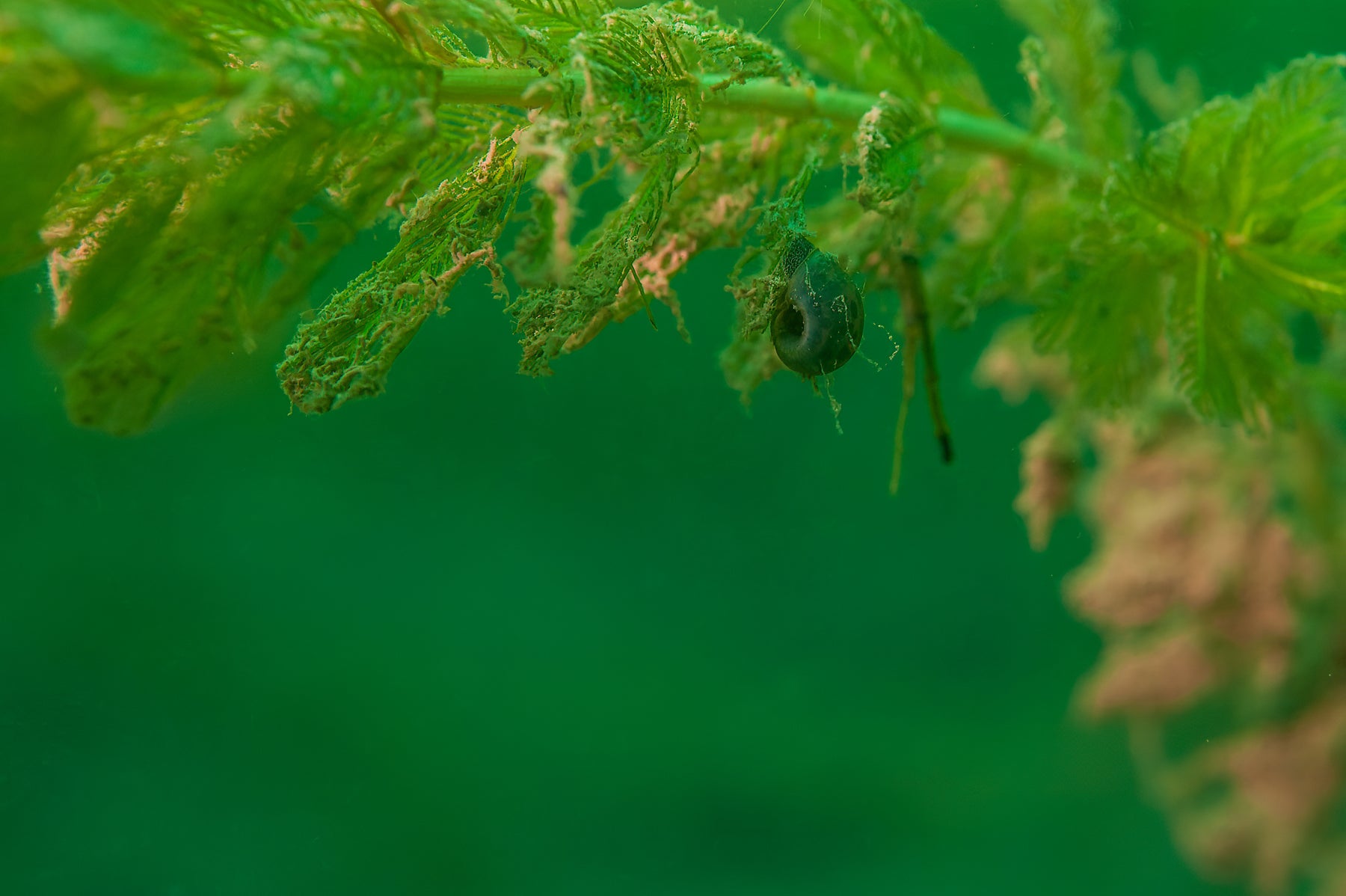Retrouvez ici les indispensables et meilleures ventes pour nos propriétaires de bassin.
Retrouvez ici les indispensables et meilleures ventes pour nos propriétaires de bassin.

Water feature owners often face a common but annoying problem: algae blooms. Fortunately, nature offers us an effective and ecological solution, in the form of two species of freshwater snails: planorbes and paludines.
In this article, we'll explore how these snails help control algae and how you can use them to keep your pond clean and healthy.
Planorbs, members of the family Planorbidae, are known for their insatiable appetite for algae. They are extremely valuable in a pond environment, playing a key role in algae control.
Their distinctive spiral shell hides a hard worker. They crisscross the bottom of your pond, nibbling on algae as they go. In addition to helping reduce algae, they also assist in the decomposition of organic matter, which contributes to an ideal biological balance in your pond.
Next come the paludines, or snails of the family Viviparidae. They are also avid algae eaters and share many advantages with the planorbs.
These snails differ mainly in their reproduction. Planorbis, which are hermaphrodites, lay eggs, while paludines bear their live offspring. This latter characteristic can be advantageous for establishing a snail population quickly in your pond.
Successfully integrating these snails into your pond depends on how you introduce them. While they are excellent algae eaters, they cannot solve a massive algae problem on their own.
It is essential to have a comprehensive strategy for algae control. This includes light management, nutrient reduction, and potentially the addition of other algae eaters.
Several other species of snails can be useful for algae control in outdoor pools and ponds. Here are some examples:
Snails of the Viviparidae family (Viviparus viviparus): These snails are also large algae eaters.
Melanoides tuberculata: These are often used in aquariums for their effectiveness at eating algae, and can be useful in ponds as well.
Neritina snails (Neritina natalensis): They are known to be excellent algae eaters in aquatic environments, but they need rather warm water.
Ampullaria snails (Pomacea bridgesii): They also consume algae, but can also eat the plants in your pond if food is lacking.
However, it is important to note that the effectiveness of snails as algae eaters depends on the type of algae present in your pond. Additionally, they will not be able to solve an algae infestation problem on their own. Algae control requires a comprehensive approach, including controlling light, reducing available nutrients (food for the algae), and possibly introducing other algae-eating organisms, such as certain fish and invertebrates.
It is also crucial to make sure that your pond conditions are suitable for the species of snail you are considering introducing. Some snails require warmer or cooler water, a certain water chemistry, etc. Also, make sure that the species you are introducing is not invasive in your area.
In conclusion, planorbes and paludines can be your best friends when it comes to fighting algae in your pond. They are a natural and ecological solution to maintain the balance of your pond. However, keep in mind that they are only one part of a larger strategy to control algae. By combining their help with proper light and nutrient management, you will be able to keep your pond healthy.
Aquipond Greenstab - Natural treatment against pond algae It is a natural product that helps limit algae at any time. It also has a prevent...
View full detailsReduces the layer of silt in the pond by at least 40% Easy to use with less impact on biodiversity Prevents fermentation, bad odors. pH ...
View full detailsOrganic dye to block plant growth by limiting photosynthesis ORGANIC PRODUCT NON TOXIC TO HUMANS (DIVING) AND FISH. 100% NATURAL AND BIODE...
View full detailsThe positive effects of barley straw have been known to water enthusiasts for a long time. But currently barley straw is difficult to find and i...
View full detailsReduces at least 40% of the layer of silt in the pond Easy to use with less impact on biodiversity Prevents fermentation, bad odors. ...
View full details
Leave a comment